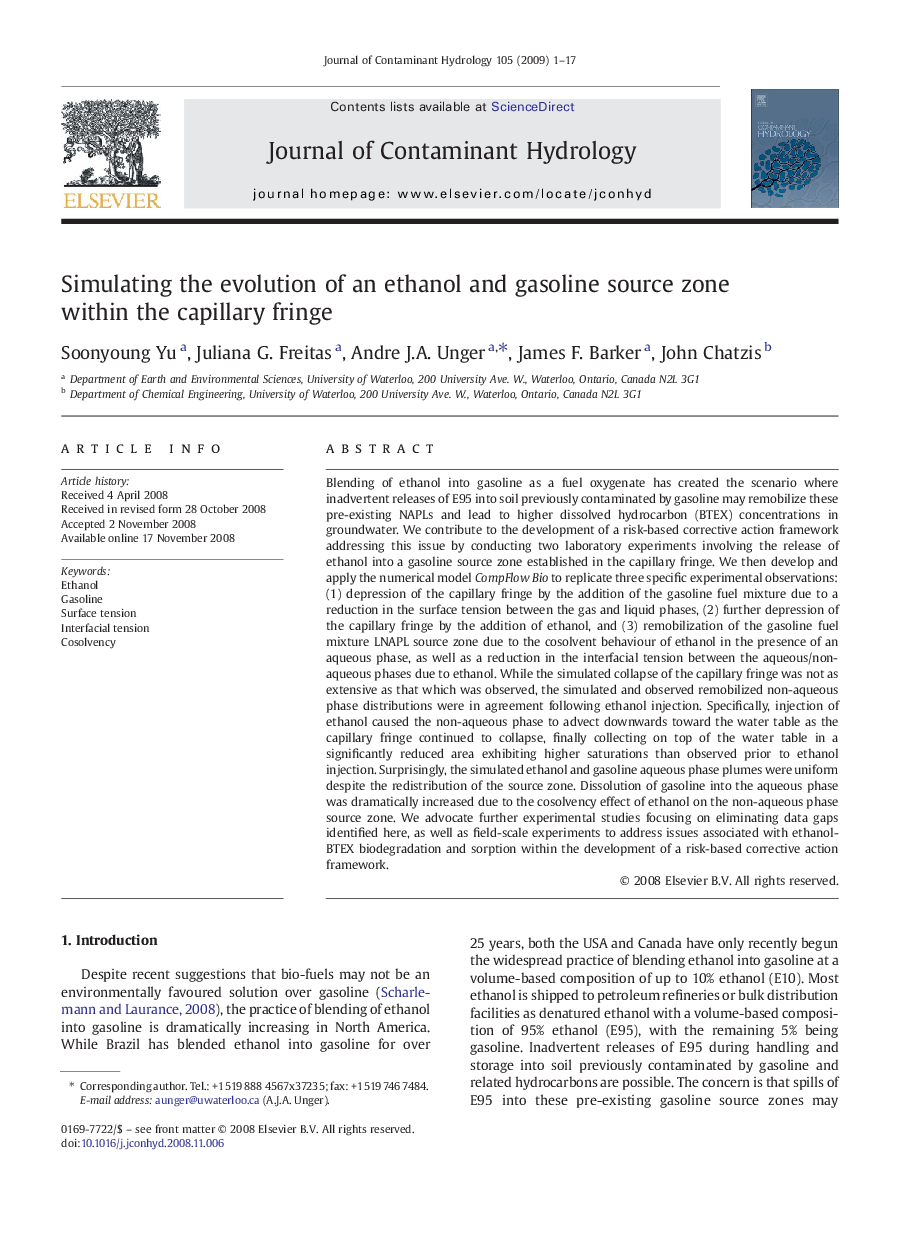| کد مقاله | کد نشریه | سال انتشار | مقاله انگلیسی | نسخه تمام متن |
|---|---|---|---|---|
| 4547312 | 1627102 | 2009 | 17 صفحه PDF | دانلود رایگان |

Blending of ethanol into gasoline as a fuel oxygenate has created the scenario where inadvertent releases of E95 into soil previously contaminated by gasoline may remobilize these pre-existing NAPLs and lead to higher dissolved hydrocarbon (BTEX) concentrations in groundwater. We contribute to the development of a risk-based corrective action framework addressing this issue by conducting two laboratory experiments involving the release of ethanol into a gasoline source zone established in the capillary fringe. We then develop and apply the numerical model CompFlow Bio to replicate three specific experimental observations: (1) depression of the capillary fringe by the addition of the gasoline fuel mixture due to a reduction in the surface tension between the gas and liquid phases, (2) further depression of the capillary fringe by the addition of ethanol, and (3) remobilization of the gasoline fuel mixture LNAPL source zone due to the cosolvent behaviour of ethanol in the presence of an aqueous phase, as well as a reduction in the interfacial tension between the aqueous/non-aqueous phases due to ethanol. While the simulated collapse of the capillary fringe was not as extensive as that which was observed, the simulated and observed remobilized non-aqueous phase distributions were in agreement following ethanol injection. Specifically, injection of ethanol caused the non-aqueous phase to advect downwards toward the water table as the capillary fringe continued to collapse, finally collecting on top of the water table in a significantly reduced area exhibiting higher saturations than observed prior to ethanol injection. Surprisingly, the simulated ethanol and gasoline aqueous phase plumes were uniform despite the redistribution of the source zone. Dissolution of gasoline into the aqueous phase was dramatically increased due to the cosolvency effect of ethanol on the non-aqueous phase source zone. We advocate further experimental studies focusing on eliminating data gaps identified here, as well as field-scale experiments to address issues associated with ethanol-BTEX biodegradation and sorption within the development of a risk-based corrective action framework.
Journal: Journal of Contaminant Hydrology - Volume 105, Issues 1–2, 27 February 2009, Pages 1–17